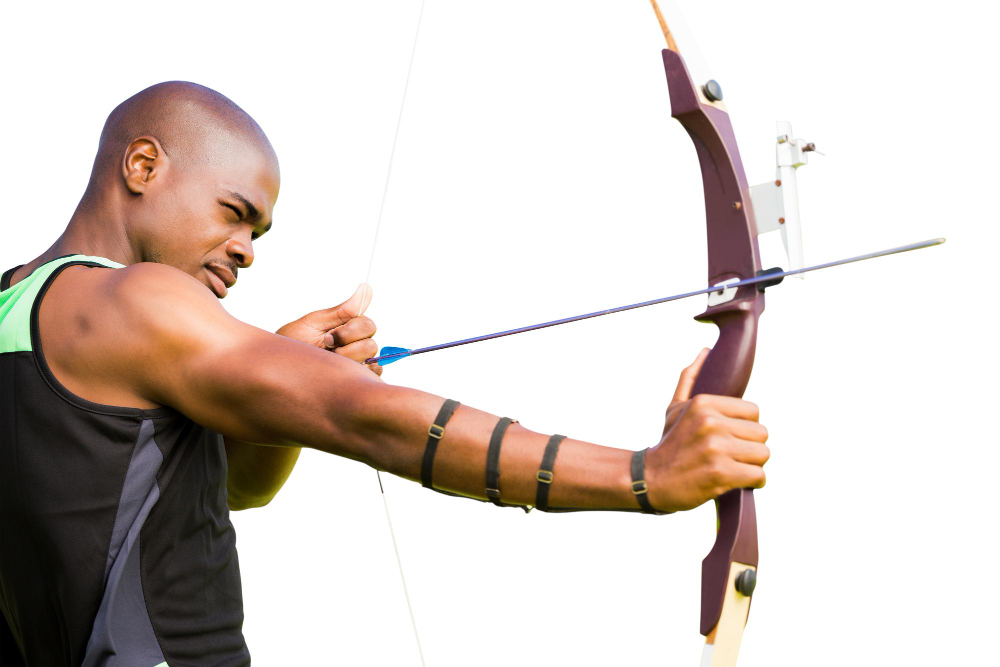
Combat archery, also known as archery tag or battle archery, is a thrilling and fast-paced sport that combines elements of archery, dodgeball, and paintball. In combat archery, players use bows and foam-tipped arrows to shoot at opponents while attempting to avoid being hit themselves. The objective is to eliminate opposing players or targets while strategically manoeuvring around the playing field to gain an advantage.
How Combat Archery Works
Combat archery is typically played in an indoor or outdoor arena specially designed for the sport. The playing field may include obstacles such as barricades, walls, or inflatable bunkers to provide cover and strategic positions for players. Each player is equipped with a bow and a set of foam-tipped arrows, which are designed to be safe for use in the game.
The game begins with players positioned at opposite ends of the playing field. At the start signal, players rush to retrieve arrows from designated areas and take cover behind obstacles to avoid being hit. Players then aim and shoot at their opponents, attempting to tag them with arrows. When a player is hit, they are temporarily out of the game and must exit the playing area until the next round.
Equipment and Safety
In combat archery, safety is paramount, and proper equipment is essential to ensure the well-being of participants. Here are some key aspects of equipment and safety measures:
-
Bows: Combat archery bows are typically recurve bows or compound bows with a draw weight suitable for the players’ strength and skill level. Bows should be inspected regularly to ensure they are in good condition and free from defects.
-
Arrows: Foam-tipped arrows are used in combat archery to reduce the risk of injury. These arrows feature a soft foam tip that absorbs impact and minimizes the force of impact when hitting a player. Arrows should be inspected for damage before each use and replaced if they show signs of wear or damage.
-
Protective Gear: Players are required to wear appropriate protective gear, including helmets, face masks, and arm guards, to shield themselves from potential injury. Protective gear should fit snugly and securely to provide maximum coverage and protection.
-
Safety Briefing: Before the start of each game, participants receive a safety briefing that outlines the rules, regulations, and safety guidelines of combat archery. This briefing covers topics such as proper handling of equipment, safe shooting practices, and emergency procedures.
-
Supervision: Combat archery games are typically supervised by trained staff or referees who oversee gameplay, enforce rules, and ensure compliance with safety protocols. Referees monitor the action closely to intervene in case of any safety concerns or rule violations.
Rules and Gameplay
Combat archery follows a set of rules and guidelines to ensure safety and fairness during gameplay. Some common rules include:
-
Safety Gear: Players are required to wear protective gear such as helmets, face masks, and arm guards to prevent injury from arrows.
-
No Headshots: Players are not allowed to intentionally aim for their opponents’ heads or faces. Shots should be aimed at the body or designated target areas.
-
Limited Ammo: At the start of each round, players have a limited number of arrows available. Additional arrows may be obtained by retrieving them from the playing field or from designated refill stations.
-
Elimination: Players are eliminated from the game if they are hit by an arrow, either directly or indirectly (e.g., if an arrow deflects off an obstacle and hits them).
-
Respawns: Some variations of combat archery allow eliminated players to re-enter the game after a designated respawn period or by completing specific objectives.
Benefits of Combat Archery
Combat archery offers numerous benefits for participants of all ages and skill levels:
-
Physical Fitness: Combat archery requires players to run, dodge, and manoeuvre around the playing field, providing a fun and engaging way to improve cardiovascular fitness, agility, and coordination.
-
Teamwork and Strategy: Combat archery encourages teamwork, communication, and strategic thinking as players work together to outmanoeuvre opponents and achieve game objectives.
-
Stress Relief: Combat archery’s fast-paced action and adrenaline rush make it an excellent way to relieve stress, unwind, and have fun with friends or colleagues.
-
Hand-Eye Coordination: Shooting a bow and arrow requires precise aiming and coordination, helping to develop hand-eye coordination and fine motor skills.
-
Inclusive and Accessible: Combat archery is a relatively low-impact sport that can be enjoyed by people of all ages, fitness levels, and abilities. It offers a welcoming and inclusive environment for participants to learn and play together.
Conclusion
In conclusion, combat archery is an exciting and dynamic sport that combines the thrill of archery with the intensity of team-based combat games. With its focus on strategy, teamwork, and physical activity, combat archery offers a unique and engaging experience for players of all ages and backgrounds. Whether played for recreation, fitness, or competitive sport, combat archery provides an exhilarating way to have fun, stay active, and connect with others in a safe and inclusive environment.





